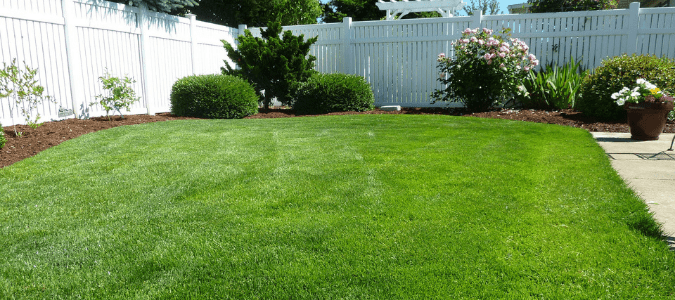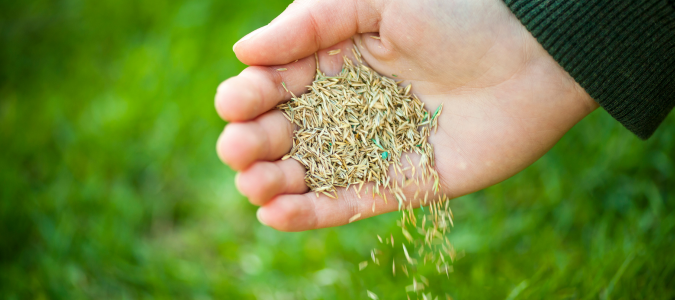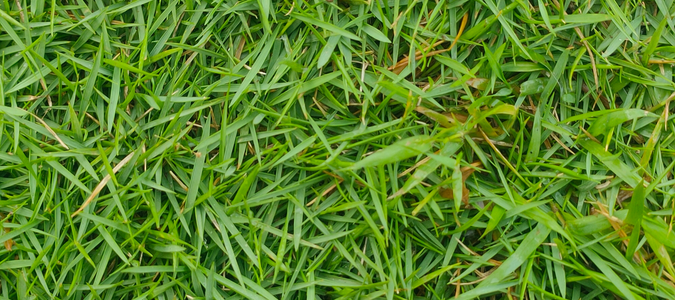Do you know how long it takes for grass to grow? New grass seedlings require care and attention to grow into sturdy and beautiful grass. How long it takes for the grass to grow depends on several factors, such as grass type and climate. However, there are some general rules about the grass planting process.
How Long Does It Take for Grass To Grow?
The amount of time it takes for grass to grow varies based on the species of grass seed you plant. For most grass seed species, you can expect to see growth at around 10 to 14 days.
However, it can also be common to take up to 30 days to see new growth after planting. On average, grass seedlings take around two months to turn into a fully grown lawn.
The rate at which your new grass seedlings grow depends on several factors, including soil conditions, climate, grass type and other varying factors. For example, cool-season grasses, such as fescue and Kentucky blue grass, are known for establishing roots quickly in cooler climates. Alternatively, warm-season grasses such as zoysia and bermuda grass, popular for southeastern states, can establish themselves quickly in warm temperatures.
How To Choose the Right Type of Grass
Choosing the right grass type for your lawn goes a long way in ensuring that your grass thrives. The easiest way to make the right choice is to work with a lawn care specialist who can help you understand your options.
Another key to success with grass seedlings is having high-quality and well-drained soil. A lawn care specialist can test your soil quality and make needed improvements before planting for the best outcome.
After planting, proper care is required to ensure that grass seedlings sprout roots that can firmly establish themselves in the soil. The better care you take at the beginning of the process, the more likely you will end up with a lush green lawn. That includes proper water and fertilization routines during the germination and establishment process.
Remember that grass seedlings require starter fertilizer, which is different from the fertilizer you apply to fully-grown grass. Starter fertilizer has the correct chemical percentages to help seedlings establish roots.
Deep watering is required to keep your grass seedlings well-hydrated to grow. How often you need to water depends on the grass type and climate where you live. Consult with a lawn care specialist to advise you on the best practices in your area.
A lawn care professional can offer you their expertise and get the job done more efficiently than doing it yourself. Additionally, they can provide custom care for your lawn that meets your needs. Working with a lawn care specialist is the best way to establish grass seedlings and ensure they grow into a beautiful and healthy new lawn.
How to Grow Grass From Seed
Successfully growing grass from seed requires the correct process, materials and equipment. Keep reading to learn how to get the process started. However, keep in mind that working with a lawn care specialist is the best way to guarantee success.
First, you need to prepare your lawn by clearing away rocks, debris and existing plants that are in the way. Next, gather the necessary materials you need to plant. Choose grass seed that is suited for where you live. If you aren’t sure what type of grass seed to plant, consult with a professional lawn care service.
Next, purchase starter fertilizer and mulch. It’s crucial that you don’t use regular fertilizer on new grass seeds, as it is made for fully-grown grass and will not work for seedlings. Starter fertilizer has the right compounds needed for new grass growth. Mulch is necessary to protect the new seeds and help the soil retain moisture.
You will also need some equipment, including a seed spreader to distribute the seeds in the soil evenly, a rake and a water hose or some kind of irrigation system in place for watering the lawn. Another optional piece of equipment you could purchase is a roller.
How to Get Started
Once you’ve gathered your materials and equipment, you can start planting. Work in this order.
- Distribute the seeds
- Fertilize the soil
- Rake and press the seeds into the soil
- Water the seeds
Using a spreader, distribute the seeds evenly over the area you want the grass to grow. It’s best to use a spreader rather than spreading the seeds by hand because a spreader eliminates the chance of overcrowding the seeds.
After spreading the seeds, apply the right amount of starter fertilizer based on the instructions on the fertilizer bag. Next, use your rake to cover the seeds with a thin layer of soil gently. To ensure proper seed-to-soil contact, the next step is to press the seeds into the soil lightly. You can do this using a roller or use your feet.
Finally, water the soil as soon as you finish the planting process. Immediate watering helps the nutrients from the starter fertilizer reach the seedlings to start the growth process.
It’s important to keep your lawn moist during the growth period to help the seedlings establish their roots. However, overwatering can lead to root rot. Consult a professional to help you determine the correct amount of water and frequency of watering your lawn needs.
Your job doesn’t end after planting. It’s important to maintain proper care for your seedlings for them to grow into a healthy lawn. For two weeks after seeding, keep a close eye on your lawn’s moisture level and ensure that foot traffic is avoided as much as possible.
Once germination occurs, you can reduce how often you water the lawn. However, during this period, your lawn still requires deep watering in order for the root system to fully establish itself. Again, discussing your specific watering needs with a professional is best.
Lastly, only mow your new lawn once the grass reaches at least three inches in height. Do not remove more than one-third of the grass height anytime you mow it.
Establishing a new lawn is a timely and detailed process that requires ample care. For the best results, working with a lawn care specialist is recommended. They can help you determine how much fertilizer you need for your lawn and how to keep it healthy.
How to Plant Grass Seed On an Existing Lawn
Are you looking to revitalize an existing lawn? You can use a process called overseeding, which is a great option when you want to bring an old lawn back to life without having to start at the beginning.
Overseeding is the process of planting new grass seed over an existing grass to improve the lawn’s health and appearance. There are many benefits to overseeding your lawn, including the following:
- Improving your lawn’s resistance to pests and diseases
- Filling in gaps in your lawn to improve density and provide a more lush look
- Enhancing curb appeal by adding new colors and textures to your lawn
- Introducing grass species that may be better suited for the climate
For overseeding to be successful, you need to do it at the right time of year. The best time will vary based on your climate; however, the consensus is that the late summer or early fall is a great time to oversee your lawn.
Overseeding requires the following process:
- Preparing your existing lawn by weeding, removing debris and mowing the current grass to a short height
- Aerating the soil to ensure proper seed-to-soil contact
- Evenly distributing new seedlings using a broadcast seed spreader over the desired areas
- Applying starter fertilizer to the new seeds and the existing grass
- Watering the overseeded areas and making sure the soil is consistently moist during the germination stage
For the best results, consult a lawn care specialist to overseed your lawn. They can guide you on the right grass variety and advise you on proper care and maintenance to ensure a beautiful lawn.
Grow a Beautiful New Lawn With Expert Help
Ready to turn your current lawn into a lush oasis? Growing grass from seed is a rewarding process. However, working with a lawn care specialist is highly recommended to ensure the best results.
If you have a lawn that you want to spruce up, overseeding is a great option. Even though you don’t have to start a new lawn from scratch, overseeding still requires proper care to yield the results you want. Again, working with a professional is a great decision. They can offer expert advice and get the job done for you so that you can enjoy your beautiful new lawn.
ABC Can Keep Your Lawn Healthy and Green
Taking care of your grass can take a lot of work. If you would rather spend your weekend enjoying your yard, contact ABC Home & Commercial Services. Our lawn care team can give you that healthy green grass you’ve been looking for. We even have a team who can refresh your landscaping!


